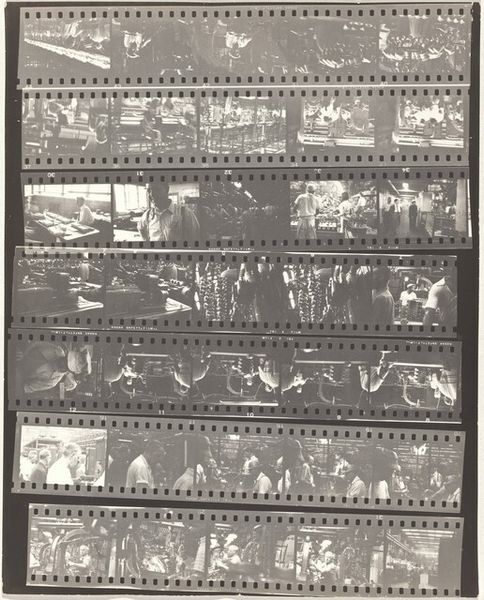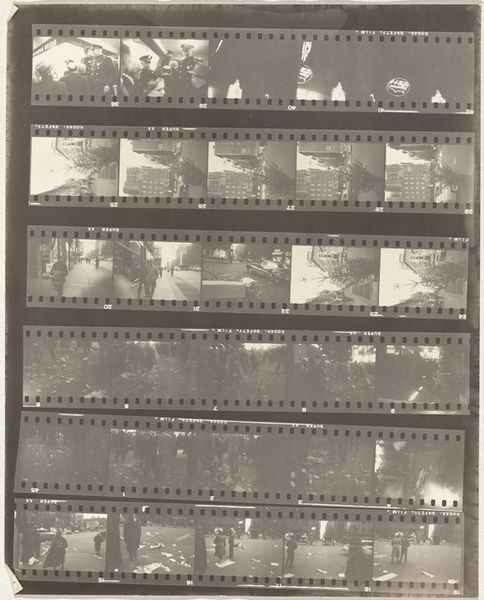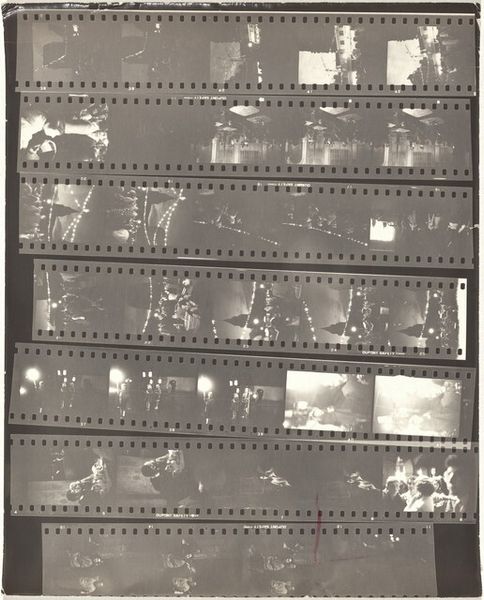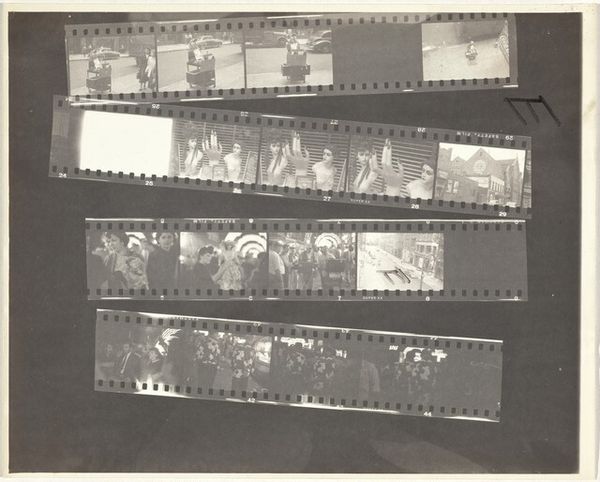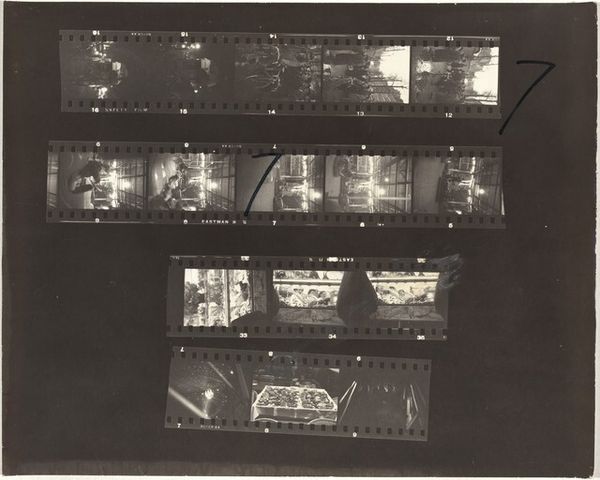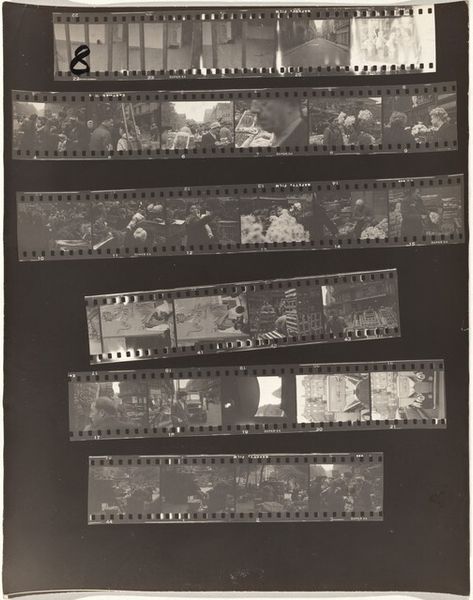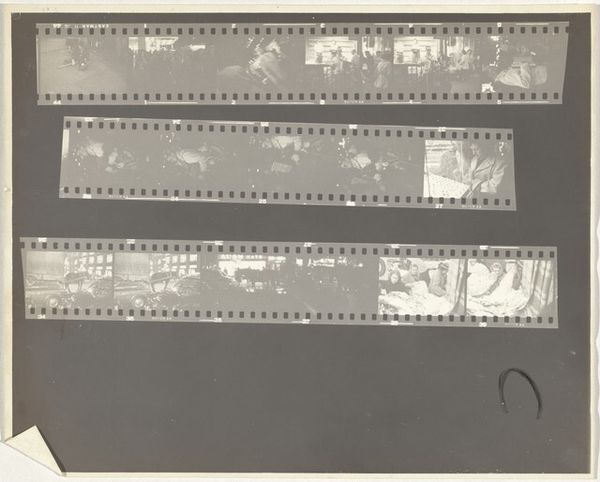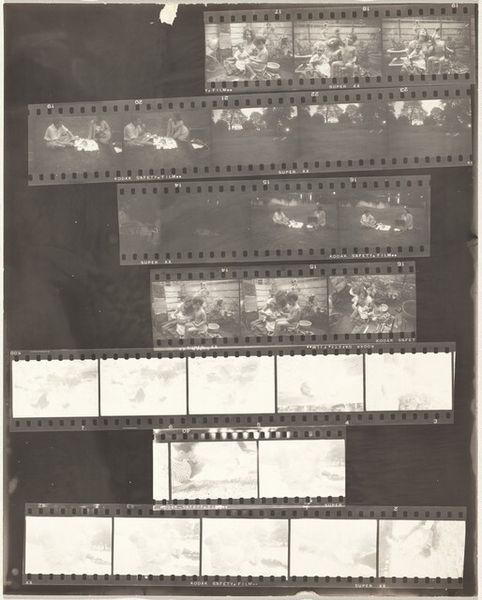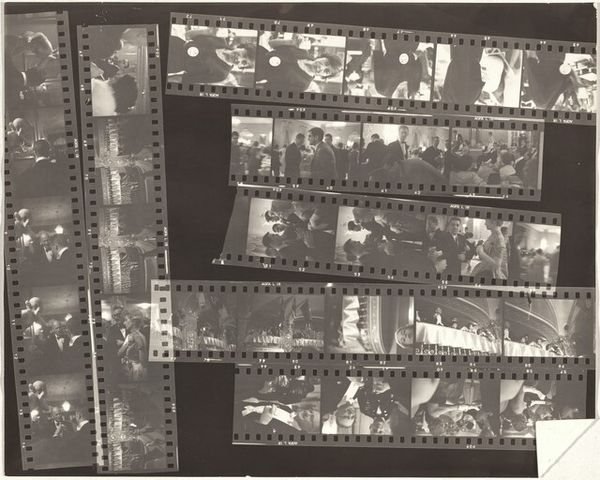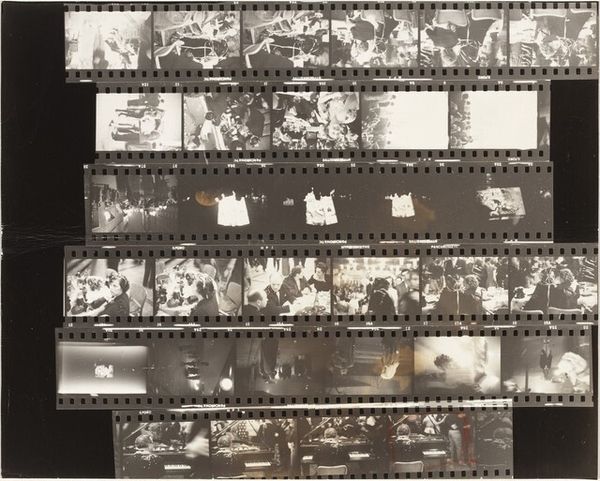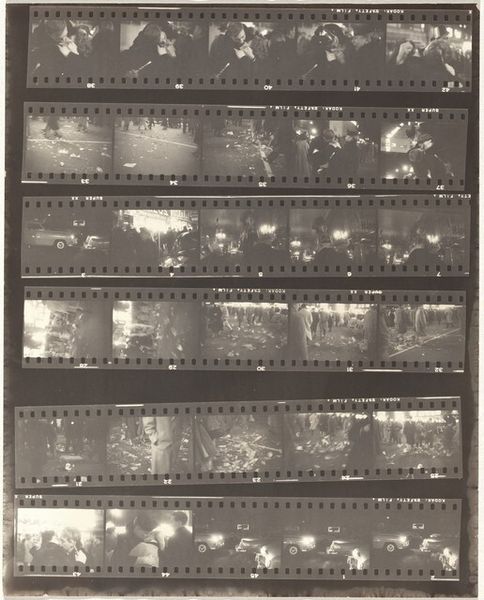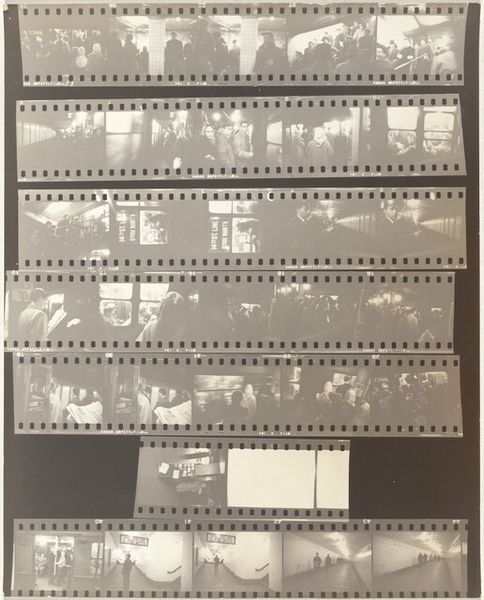
photography, gelatin-silver-print
#
archive photography
#
street-photography
#
photography
#
new-york-school
#
gelatin-silver-print
#
cityscape
#
modernism
Dimensions: overall: 20.4 x 25.3 cm (8 1/16 x 9 15/16 in.)
Copyright: National Gallery of Art: CC0 1.0
Curator: This is Robert Frank's "Early New York City no number," created between 1950 and 1951. It's a gelatin silver print offering a glimpse into his early photographic explorations. Editor: The image feels raw and unpolished. I am immediately drawn to the strips of what seem to be undeveloped film, haphazardly placed on the page, creating an almost melancholic narrative of the bustling metropolis. Curator: That raw quality speaks volumes. Frank, as part of the New York School, wasn’t just capturing cityscapes; he was capturing a feeling, an energy, an often-unseen reality. There’s a sense of social commentary lurking beneath the surface. We can trace how modernism as a style intersects with Frank’s critical approach, focusing on alienation, consumption and identity. Editor: Yes, it challenges traditional notions of photographic representation. I am keen to delve into the process; what materials were readily available, and how this access shaped his visual vocabulary? The dark blacks are very pronounced, what impact does the light have here? Curator: The dark blacks indeed are heavy. It underscores the film’s materiality itself, hinting at the physical conditions of his work. The high contrast serves a symbolic function too. This can represent the tension within urban life in that time period. Considering theories of urban alienation can also further deepen how we understand its symbolism. Editor: The visible filmstrips speak to production. I'm curious how he conceptualized this piece as more than just single photographic prints; he showcases his methods to viewers, inviting us to recognize all that went into the piece. Curator: Absolutely. Think about his background and how that informed his artmaking, with a European Jewish experience with diaspora. We have the perspective of someone acutely aware of societal divisions viewing a landscape itself grappling with its identity in the postwar era. Editor: His work then becomes a commentary on mass production and mass society as his materials also invite us to question how labour functions and exists to bring art into view. I am fascinated that he draws our focus towards that whole cycle. Curator: Exactly! It’s not just what's depicted, but how it's depicted, and the story of that making which amplifies its resonance, urging critical reflection on city life and modes of representation themselves. Editor: Looking at the images again, I see New York, but feel so grounded by what came into creating and making. The layers of reflection here make Frank’s work stand the test of time.
Comments
No comments
Be the first to comment and join the conversation on the ultimate creative platform.

